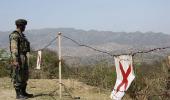'Any conventional conflict could trigger a nuclear war with results that neither India nor Pakistan could survive easily.'
A revealing excerpt from Shuja Nawaz's The Battle For Pakistan: The Bitter US Friendship And A Tough Neighbourhood.
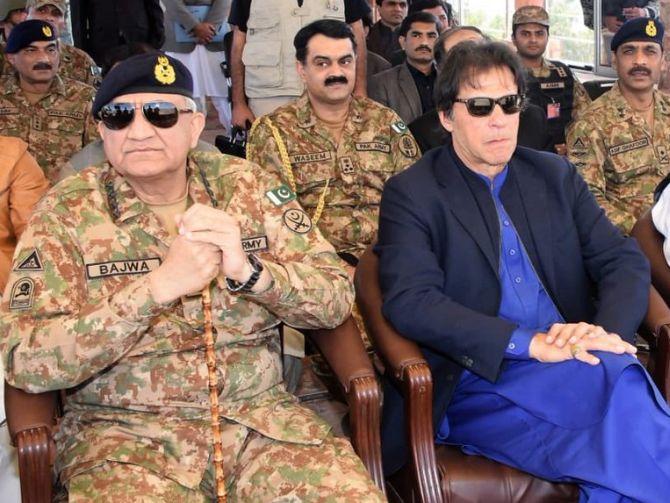
The dominating issue facing Pakistan's defence strategy is its continuing 'no peace, no war' relationship with India.
This historical rivalry continues to inform Pakistani military thinking to a great extent.
Pakistan's military doctrine, which has long been based on defending Pakistan's territory against an Indian attack in an effort to undo the Partition of British India in 1947, is now shifting to what is being called a 'comprehensive doctrine' to combat both the potential Indian capability to attack and weaken Pakistan and the growing threat of internal militancy and insurgency.
While India is not named in the doctrine, clearly the doctrine is aimed primarily at India while a new facet is added: Internal militancy.
The expression of continuing fear of India's growing ability to use what the doctrine calls 'coercive diplomacy' retains the key elements of Pakistan's conventional response and the development of its nuclear capacity to deter any Indian military threat.
In 2011, India's armed forces, with an army of 1.2 million, heavily outweighed Pakistan's armed forces of some 610,000, and an army of over 500,000.
But on the ground, Pakistan's armour at 2,656 was more than half the size of India's 4,117 tanks, and armoured infantry vehicles or personnel carriers at 1,266 were close to India's 1,786.
India's navy far outnumbers Pakistan's, and in the air India's 365 modern combat aircraft far outnumbered Pakistan's 58.
Pakistan is estimated to have over 190 surface-to-surface missiles, while India has not released any data on its missile strength.
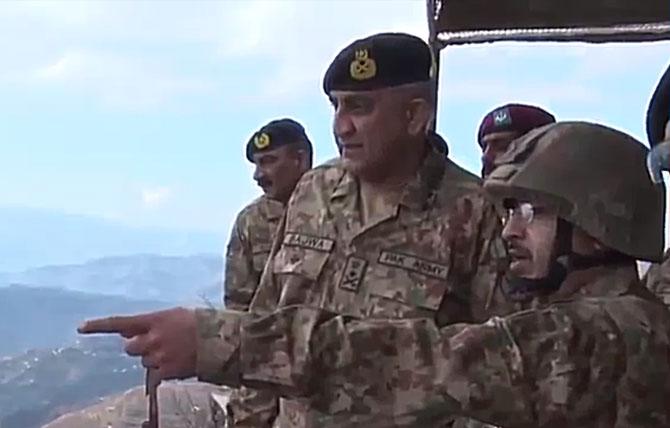
What shifts the balance somewhat in Pakistan's favour is the lack of readiness of the huge Indian military, and increasingly a hodge-podge of new equipment from different sources being inducted into the Indian armed forces that will exacerbate the logistical and communications and training problems bedevilling India's military operations.
Added to this mess is the dominant Indian bureaucracy that slows down the acquisition and induction of new weapon systems.
But this advantage may not last for Pakistan if mutual hostility remains the hallmark of its relationship with India.
Pakistan's military doctrine and planning also suffers from ad hocism rather than a predictable, repetitive and inclusive system for updating it, involving both civilian and military actors.
The reality is that the war directive in Pakistan emerges sporadically rather than regularly from the military and is merely rubber-stamped by the civilian leadership.
It is not built from the ground up as a routine.
Meanwhile in India, the ministry of defence issues a new war directive every five years, and service headquarters update their war operations instructions every two years or with a change in command.
The legwork is done by the joint headquarters with input from the services and is presented to the defence advisory board, a body of elders that is not duplicated in Pakistan.

During the Musharraf period, despite efforts by some of his commanders and the joint headquarters, he refused to open discussion of a new directive, dismissing such requests with the retort that 'we know what to do'.
The unity of command for civil and military decision making in a single person (Musharraf) made this possible.
Much of the focus was on high-level conventional defence.
Nuclear policy began intervening in conventional defence policy by 2004.
Musharraf had combined all his civilian and military functions by then.
By 2007-2008, the NDU had also begun including discussion of the nuclear threshold vis-a-vis India in its war games.
The concept of combined deterrence emerged, informed by the experience of the 2001 - 2002 escalation of tensions with India.
Pakistan realised the value of dovetailing conventional and nuclear posture and plans.
In its thinking, this led the US to lean on India to draw down its forward deployment during that crisis.
The subsequent emergence of the new defence policy against India was seen as a response to the so-called Cold Start doctrine of India, now better known as the Proactive Strategy.
India continues to publicly disavow the premise of Cold Start, that its forward-deployed Integrated Battle Groups could move rapidly into Pakistani territory, capture key cities and territory and make Pakistan sue for terms.
Pakistan continues to see this as an emerging threat and considers the 1980s thinking that led to the Brasstacks exercise as a testing of the idea of such rapid combined manoeuvres designed to hit Pakistan at multiple points of vulnerability in a modern version of the German blitzkrieg.
It countered with an offensive-defensive approach that was based on hitting India in response with a counter-strike and capturing key territory for itself.
Its conventional riposte, based on a net-centric doctrine of well-planned counterattacks, was bolstered over time by the testing and development of a tactical nuclear capability by Pakistan (countered by India).
This took the form of short-range so-called tactical weapons mounted on ballistic and cruise missiles, adding to the potential for a nuclear holocaust in the region with global consequences.
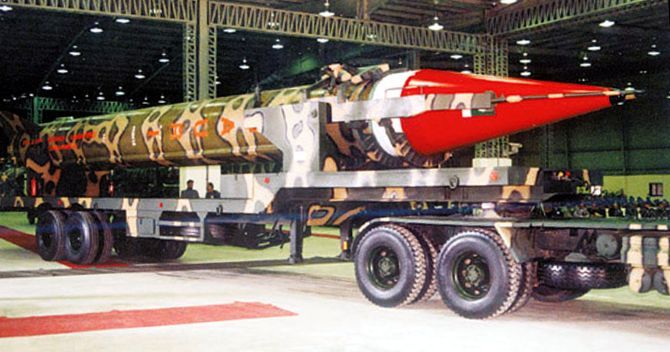
Pakistan's new army doctrine recognises a wider spectrum of conflict that includes sub-conventional warfare in addition to conventional warfare that, in turn, includes low-intensity operations, conventional war and nuclear warfare.
The latter is aimed at complementing comprehensive deterrence and adding to the combat potential of the regular forces, leading to a potentially heavy cost for any aggressor.
Nuclear war is seen 'only as a last resort'.
Moreover, while conventional warfare is to be conducted under the devolved authority given by the national command authority to the military high command, the decision to go to nuclear war can only be initiated by the civilian authority under 'the exclusive right of the NCA headed by the prime minister'.
But no one has any doubts that should India launch a serious and deep conventional strike into Pakistan, the army would take the lead in deciding how to respond rapidly, with or without formal approval by the NCA.
Increasingly, Pakistan sees itself subject to potentially hostile activity from India, under the assumption that a sort of nuclear parity has led to maintenance of the status quo.
So, it expects India (the unnamed South Asian foe in its new army doctrine) to synchronise activities at various levels to: 'subtly erode [Pakistan's]. national resilience and force compliance'.

India's willingness to bear the cost of war will help define the intensity, scale and nature of any future conflict, according to this view.
At the same time, Pakistan's own calculations rest on the intensity of a nuclear exchange that would be Counter Value in nature rather than Counter Force.
Potentially, ten major Indian urban centres and all seven of Pakistan's major cities might be the targets in a nuclear exchange.
The end result would be the destruction of large tracts of India and most of Pakistani territory, and the release of dust and debris into the atmosphere that would travel eastwards, eventually covering the entire Northern Hemisphere.
In effect, Nuclear Winter could descend on the northern half of the globe for as much as six months.
India's own calculations may well mirror those of Pakistan.
A backward glance at previous crises shows a remarkable degree of restraint in the deployment of nuclear assets in times of tension between India and Pakistan.
Yet, Pakistan, the smaller adversary, chose to flex its nuclear muscles via testing of delivery vehicles such as the Ghauri and Hatf missiles.
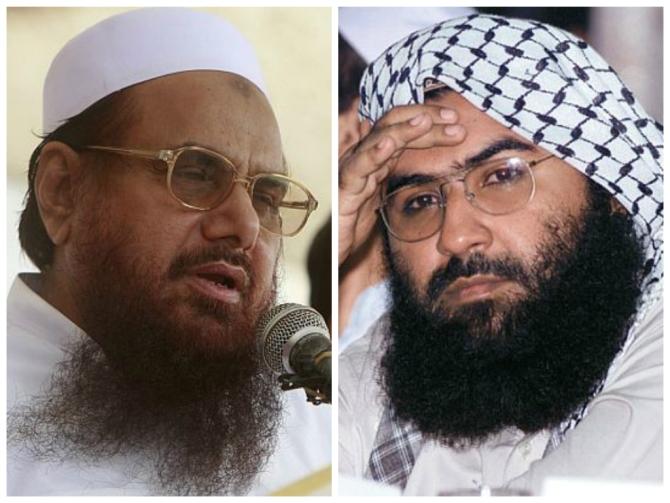
In the 2002 crisis, following the attack by non-State actors on the Indian Parliament, Pakistan chose to reduce the talk of nuclear weapons and continued to deny that it readied its nuclear arsenal when India moved conventional forces to its eastern border.
It maintains that it would only use nuclear weapons if India attacks and occupies large tracts of Pakistani territory and attempts to stifle Pakistan's economy or weaken its polity by internal subversion.
In essence, as Feroz Hassan Khan maintains: 'The Pakistanis see no role for nuclear weapons than to deter India from waging a conventional war.'
At the same time, Pakistani experts continue to see the modest attempts to develop conventional confidence-building measures, with India being overshadowed by developments that may be inherently antithetical to Pakistani interests vis-a-vis India.
They see the Indo-US nuclear agreement tilting the balance in India's favour, posing a continuous challenge for Pakistan.
By keeping India's strategic nuclear weapons systems out of safeguards, India retains the right to improve and deploy its nuclear weapons without let or hindrance, according to this view.
In their calculation, the only way the balance could be maintained would be to offer a package approach that allowed Pakistan the same access to nuclear material that India gained from this agreement.
The US and its allies have not been inclined to head in this direction.

Two major principles will inform the Pakistani decision:
1. Any conventional conflict could trigger a nuclear war with results that neither India nor Pakistan could survive easily.
2. It does not benefit either side in this heightened nuclear environment to launch a surprise move or attack.
Hair-trigger responses are built into both systems in the subcontinent, given the lack of warning time.
India's much publicised 'surgical strikes' might be the fuse for a rapid escalation of conflict.
The answer rests on a Strategic Restraint Regime, rooted in continuing and deepening contacts between India and Pakistan at all levels of government and society to reduce the risk of accidental conflict.
The US can play a more active role between India and Pakistan in this regard while helping Pakistan economically so it does not feel threatened by India as a regional hegemon.
Excerpted from The Battle For Pakistan: The Bitter US Friendship And A Tough Neighbourhood by Shuja Nawaz, with the kind permission of the publishers, Penguin Random House India.


